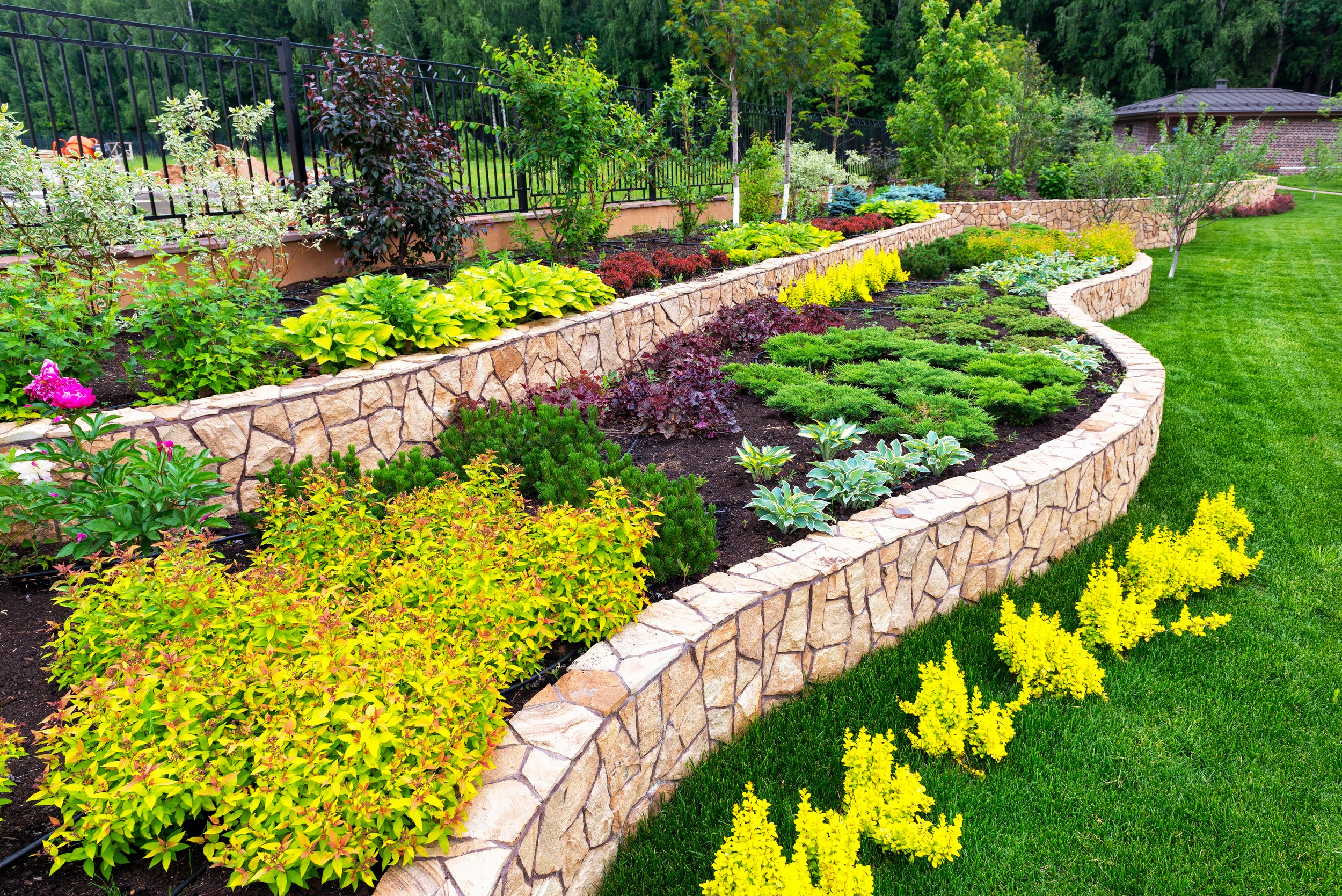The 10-Minute Rule for Hilton Head Landscapes
The 10-Minute Rule for Hilton Head Landscapes
Blog Article
The smart Trick of Hilton Head Landscapes That Nobody is Talking About
Table of ContentsHilton Head Landscapes for BeginnersThe Best Strategy To Use For Hilton Head LandscapesHilton Head Landscapes - TruthsAbout Hilton Head LandscapesFascination About Hilton Head LandscapesHilton Head Landscapes - QuestionsThe Main Principles Of Hilton Head Landscapes
Line produces all forms and patterns and can be made use of in a selection of methods the landscape. Line in the landscape is created by the side between 2 materials, the outline or shape of a form, or a lengthy direct attribute. Lines are an effective tool for the designer due to the fact that they can be utilized to produce an unlimited variety of forms and kinds, and they manage activity of the eye and the body.

Lines can have several features, such as those defined below, but they typically serve various objectives. Figure 1. Lines in the landscape - hilton head landscapers. The homes of lines identify just how people respond to the landscape, both mentally and physically. Straight lines are structural and forceful; they develop a formal personality, are typically linked with an in proportion layout, and lead the eye directly to a centerpiece.
Things about Hilton Head Landscapes
Straight lines are usually found in hardscape edges and material. Rounded lines develop a casual, all-natural, relaxed character that is connected extra with nature and unbalanced balance. Bent lines relocate the eye at a slower rate and include mystery to the area by producing surprise sights. Upright lines relocate the eye up, making a room really feel bigger.
Upright lines in the landscape consist of tall, slim plant product, such as trees, or tall structures, such as an arbor or a bird house on a post. Straight lines relocate the eye along the ground plane and can make a space feel larger. Reduced lines are a lot more suppressed and produce a feeling of rest or repose.
5 Easy Facts About Hilton Head Landscapes Described
Lines are additionally created by the vertical kinds of built attributes and plant material. There are three key line types that develop form in the landscape: bedlines, hardscape lines, and plant lines.
Bedlines link plant product to your house and hardscape due to the fact that the eye complies with the line, relocating the gaze with the landscape. Hardscape lines are developed by the edge of the hardscape, which defines the constructed structure. Line can likewise be developed by lengthy and narrow materials, such as a fencing or wall surface.
Some Ideas on Hilton Head Landscapes You Need To Know
Type is discovered in both hardscape and plants, and it is typically the dominant visual element that spatially organizes the landscape and frequently figures out the design of the garden. The kind of frameworks, plant beds, and garden accessories also identifies the overall form theme of the yard. Official, geometric kinds include circles, squares, and polygons.
Plants produce type in the garden through their outlines or silhouettes, but kind can additionally be defined by a space or negative room in between plants - landscape design hilton head (https://www.easel.ly/browserEasel/14491654). Circles can be cycles, or they can be split into half circles or circle sectors and integrated with lines to produce arcs and tangents
Examine This Report about Hilton Head Landscapes
Circles are a strong layout form since the eye is constantly drawn to the center, which can be made use of to emphasize a focal point or connect various other types. Circular kinds in hardscape and yard panels.
The square form can likewise be fractional and used repetitively to create a grid pattern. Unlike circles, squares are stronger on the brink, which can be aligned or overlapped to create distinct patterns and even more intricate kinds. Polygons are many-sided kinds with straight edges. Triangulars, as an example, basics are three-sided polygons.
Twisting lines typically simulate the all-natural training course of rivers or streams and can be called smooth lines with deeply rounded wavinesses. Twisting lines (Figure 3) function well for paths, plant bedlines, and completely dry stream beds. Twisting lines can add passion and secret to a yard by leading viewers around corners to discover new sights and areas.
The Hilton Head Landscapes Diaries

Figure 5. Fragmented sides: tipping stones in pathway. Form is the most enduring quality of a plant (landscapers in bluffton sc). https://www.intensedebate.com/profiles/stevenagonzales. Usual plant forms are well developed and standard, as type is the most consistent and recognizable quality of plants. Type can additionally be produced with the massing of plants, where the overall mass creates a different kind than a private plant.
A very different kind needs to be made use of with careone or 2 job well as a centerpiece, yet way too many produce disorder. All-natural plant kinds, instead than over-trimmed forms, must establish the bulk of the composition. The significance of overall kind is basically reliant on the checking out perspectivethe kind of a tree can show up fairly various to an individual standing under the canopy versus seeing the tree from a range in an open field.
Hilton Head Landscapes for Beginners
Plant forms additionally produce and define the gap or open rooms in between the plants, developing either convex or concave types in deep spaces. High-arching tree branches usually produce a concave open room under the branches, and a rounded canopy with reduced branches loads the room to produce a convex form outdoors area under the tree.
Report this page